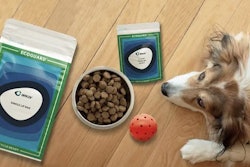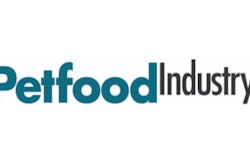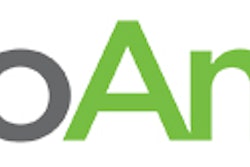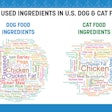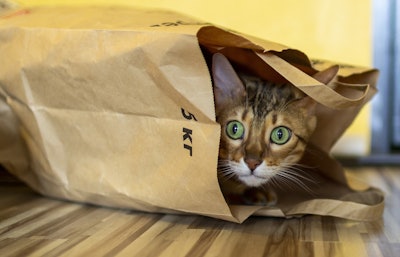
There are many reasons packaging is crucial in the pet food industry. It directly impacts the safety, freshness, and quality of the food by protecting it from contamination, preserving its nutritional value. It provides essential information to pet owners about the product's ingredients and feeding guidelines, ultimately influencing their purchasing decisions. It also plays a key role in brand perception and convenience for consumers.
Petfood Industry asked packaging suppliers to share their insights into the latest trends impacting pet food packaging as we head into 2025.
1. Recycle-ready materials advances circular economy
In the packaging industry, sustainability is no longer a trend – it’s a way of life. The pet food industry continues to focus on developing eco-friendly packaging options to minimize environmental impact and meet consumer demands for recyclable materials.
“One of the top trends in packaging for pet food for 2025 will be focusing on recycle-ready and packaging containing PCR (post-consumer recycled) material,” said Tim Kieny, vice president of strategic marketing (dairy, protein and pet), TC Transcontinental Packaging.
Kieny noted pet food packaging is moving toward greater sustainability due in part to regulatory changes and industry standards that will continue to demand recyclable materials sustainable designs.
Kieny explained TC’s VieVERTe product line includes recyclable mono-material films that are being prequalified by How2Recycle in the U.S. as well as option that incorporates PCR plastic into the packaging, using both advanced and mechanical PCR materials. The company also uses International Sustainability and Carbon Certificate (ISCC) PLUS certified-circular plastics in select products.
“This approach not only reduces reliance on virgin plastics but also supports a circular economy by transforming plastic waste into new, usable materials,” he said.
TC Transcontinental Packaging has recently invested in Biaxially Oriented Polyethylene (BOPE) technology for pet food packaging. BOPE films offer enhanced recyclability as a mono-material structure, superior strength allowing for thinner films, improved mechanical properties, and excellent printability, said Kieny.
“Our BOPE investment is not just a technological upgrade, it’s a strategic initiative that positions us — and our clients — at the forefront of sustainable packaging innovation,” he said. “BOPE films will set new industry standards for pet food packaging.”
Kieny explained BOPE is designed to enable the company to create fully recyclable packaging without compromising on durability or aesthetics. “It's compatible with existing equipment and supports sustainability goals, making it beneficial across the supply chain — from manufacturers to consumers,” he added.
 PRO-EVO Recyclable is a pre-qualified curbside recyclable multi-wall SOS bag, while QUADFLEX Recyclable is a pre-qualified recyclable pouch. ProAmpac featured both products at last year's Petfood Forum in Kansas City.ProAmpac
PRO-EVO Recyclable is a pre-qualified curbside recyclable multi-wall SOS bag, while QUADFLEX Recyclable is a pre-qualified recyclable pouch. ProAmpac featured both products at last year's Petfood Forum in Kansas City.ProAmpac
2. Intelligent packaging continues to grow
Intelligent packaging, also known as smart packaging, is a system that uses technology to monitor and communicate information about a product's quality, safety and history. It can include sensors, indicators and data carriers like barcodes and RFID tags.
ProAmpac launched its active and intelligent packaging brand in 2023, ProActive Intelligence, which is divided into two categories.
ProActive Protect for when the packaging is acting on a product, like its Moisture Protect MP-1000 that adsorbs moisture from the headspace on the package avoiding the need for desiccant packets.
ProActive Communicate for informing consumers of something like a thermochromic ink on a cat food pouch that shows the word “MEOW” when heated to the perfect temperature for the cat’s consumption.
“Intelligent packaging, smart and or active packaging is happening now,” said Kristy Paulin, EVP, Global Marketing with ProAmpac. “The development of oxygen scavenging technologies will allow for the removal of packets from treat and jerky pouches, increasing operational efficiency and safety of humans and pets.”
Smart packaging will become more a part of the packaging landscape as technologies develop and new ways to incorporate them cost-effectively into the ecosystem of packaging options mature, added Kieny.
3. Fresh and frozen pet food requires unique packaging
The increasing popularity of fresh and frozen pet food is reshaping packaging requirements in both traditional brick-and-mortar stores and e-commerce channels. “Fresh pet food often contains perishable ingredients that require refrigeration or freezing, demanding packaging solutions that maintain product integrity, ensure safety and appeal to consumers,” said Kieny.
Paulin with ProAmpac added sustainability will continue to be one of the biggest influences on packaging materials indefinitely. “Fresh and premium ingredients are key drivers in pet food selection, so packaging that reflects that will continue to grow,” she said. “Think more organic, natural and fiber-based packaging solutions.”
Duncan Randall, owner of Phoenix Bark, a fresh pet food producer located in Kilkeel, County Down, Ireland, said his company forgoes plastic to instead use soy and paraffin-free, compostable parchment with a paper sleeve that can be recycled.
“At Phoenix Bark, we pioneered the use of paper packaging for our complete dog food line back in 2019 following extensive funding and research,” said Randall. “Our entire range of free-range and wild dog food has been wrapped in paper since then.”
He noted paper packaging is designed to minimize waste and avoid impacting landfills. The environmental paw print for a full year of feeding means 365 compostable sheets and recyclable paper sleeves. Phoenix Bark uses supplier Klee Paper for its parchment paper.
German pet food startup Wynn Petfood recently announced its packing its entire product portfolio of premium pet food blends and snacks for dogs 100% in paper. According to Koehler Paper, the designer of the packaging material, this is the first time they've used paper packaging for wet food blends.
The research and development team from Koehler Innovation & Technology worked with Koehler Paper to develop the NexFlex product range, which is designed as a unique and recyclable generation of flexible packaging paper. The goal was to replace plastic in packaging by using "barrier paper" wherever possible. The range covers a broad spectrum, including standard coated and uncoated paper used in laminates for pouches, sachets and other applications, making them suitable for a wide range of packaging for food and non‐food products.
To learn more about pet food packaging trends and meet packaging suppliers focused on the pet food industry, be sure to register for Petfood Forum. Petfood Forum and Petfood Essentials show dates are April 28-30, 2025, in Kansas City, Missouri, U.S. To stay informed on the latest event developments, go to PetfoodForumEvents.com.



